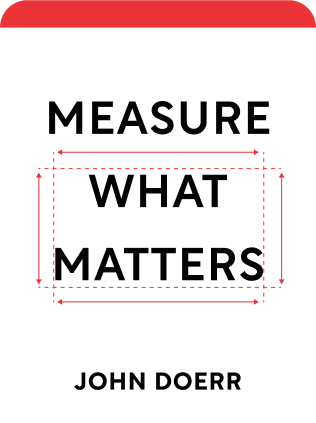

This article is an excerpt from the Shortform summary of "Measure What Matters" by John Doerr. Shortform has the world's best summaries of books you should be reading.
Like this article? Sign up for a free trial here .
How do you define OKR? What is the OKR definition, and how can you use OKRs in your business?
OKRs are a type of metric that stands for Objectives and Key Results. OKR objectives help companies set, track, and adapt their goals.
Keep reading to further define OKR, and find out how OKR objectives work.
Define OKR and Its Components
How do you define OKRs? OKR stands for Objectives and Key Results. They help companies, teams, and individuals set, measure, and reflect on goals in a structured, meaningful way. This is the first step in understanding the OKR definition.
Objectives
What does OKR mean when it comes to objectives? The objective is the goal, what the company, team, or individual aims to achieve. In other words, the objective is the “what.”
Objectives:
- State the overall goal or vision
- Must be tangible, concrete, and objective
- Must be action-oriented
Example: Hire new employees to meet the needs of the expanding organization.
Key Results
What does OKR mean when talking about key results? Key results are benchmarks toward the objective. In other words, key results are the “how,” the steps you need to take to meet your goal.
Key results:
- State the measurable sub-goals that, if achieved, will collectively result in achieving the objective
- Usually include numbers (revenue, market share, active users, growth, and so on)
- Are time-bound (they include specific deadlines)
- Are black-and-white—you either succeed in achieving a key result, or you don’t
- Are relatively challenging. If a key result seems easy, it, or your objective, may not be ambitious enough
Example:
Objective: Hire new employees to meet the needs of the expanding organization.
Key Result #1: Meet with 3 candidates this month for the role of director of finance and hire 1.
Key Result #2: Meet with 5 candidates this quarter for the role of marketing manager and hire 1.
Key Result #3: Meet with 5 candidates this quarter for the role of product manager and hire 1.
Using this OKR meaning, companies that use this system have OKRs at every tier: Top-line OKRs for the entire company, division OKRs, team OKRs, and individual OKRs. Everyone in the company creates OKRs, and everyone’s OKRs are visible to everyone else. Now that you know that answer to the question “what does OKR mean?” you can think about how it compares to traditional management systems.
Traditional Management Systems v. OKRs
Your company likely uses a traditional management system with the qualities listed below. Compare it to the OKR meaning:
| Traditional Management Systems | OKRs |
| Key question: What’s the goal? | Key questions: What’s the goal, and how will we get there? |
| Goals reviewed annually | Goals reviewed quarterly or monthly |
| Objectives are private | Objectives are public (even those of the CEO) |
| Alignment is top-down (objectives trickle down from the CEO to frontline employees) | Alignment is top-down, bottom-up, and horizontal |
| Success of objectives is tied to compensation | Success of objectives is (mostly) divorced from compensation |
| System encourages risk-aversion | System encourages risk-taking |
How to Implement OKRs for focus: Create OKRs at the organizational level, the departmental level, the team level, and the individual level. At each tier, create no more than 5 sets of objectives and key results. Limiting the number of OKRs keeps you focused on what matters most. This also helps you define OKRs for your personal use.
This OKR superpower has two facets: 1) focus on your priorities, and 2) commit to the OKR process. We’ll look at “focus” first to help you define OKRs.
There are 3 steps to creating OKRs that focus your attention
- Identify your objectives
- Identify your key results
- Check the quantity and quality of your OKRs
Now you can define OKRs, and explain the OKR definition to others. The next step is to begin using OKR objectives in your business.

———End of Preview———
Like what you just read? Read the rest of the world's best summary of John Doerr's "Measure What Matters" at Shortform .
Here's what you'll find in our full Measure What Matters summary :
- How Google uses OKRs to rally 100,000 employees in the right direction
- How to avoid setting useless OKRs, and how to set great ones
- Key subtle behaviors your team must master to make OKRs work






